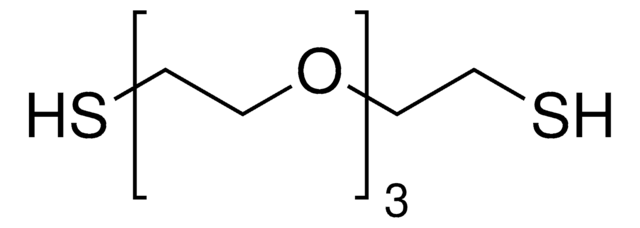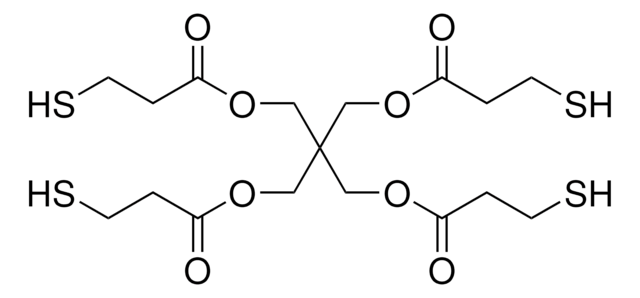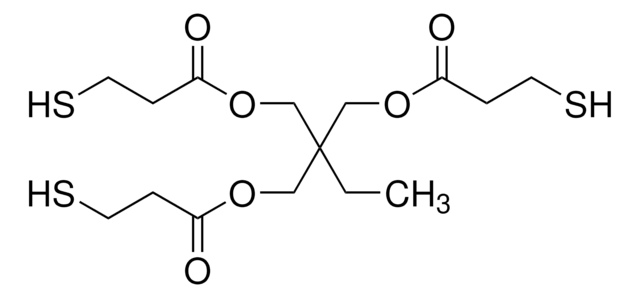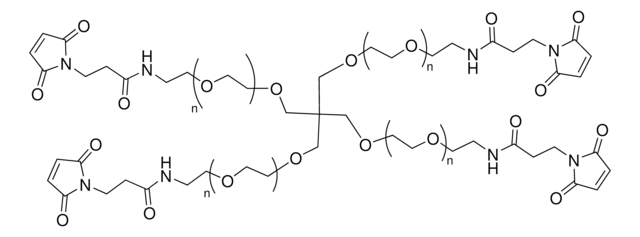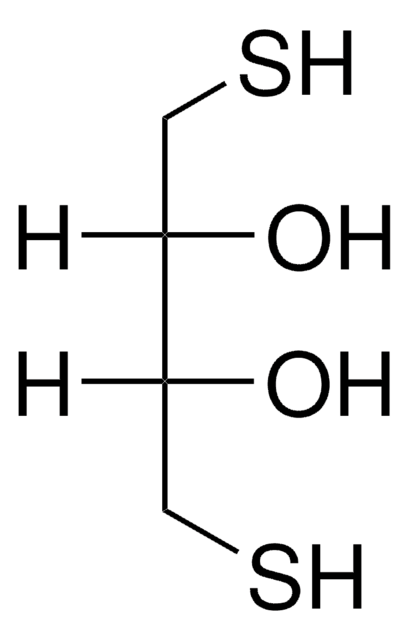704369
Poly(ethylene glycol) dithiol
average Mn 1, 500, thiol
Synonyme(s) :
Polyethylene glycol, PEG dithiol
About This Item
Produits recommandés
Nom du produit
Poly(ethylene glycol) dithiol, average Mn 1,500
Forme
solid
Poids mol.
Mn 1200-1800
average Mn 1,500
Pertinence de la réaction
reagent type: cross-linking reagent
reactivity: thiol reactive
Pf
47-50 °C
Extrémité Ω
thiol
Extrémité α
thiol
Architecture des polymères
shape: linear
functionality: homobifunctional
Température de stockage
−20°C
Vous recherchez des produits similaires ? Visite Guide de comparaison des produits
Application
- Photocurable Bioink for the Inkjet 3D Pharming of Hydrophilic Drugs.: This research discusses the development of a photocurable bioink using poly(ethylene glycol) dithiol for the inkjet 3D printing of hydrophilic drugs. The study highlights the biocompatibility and potential applications in drug delivery systems (Acosta-Vélez et al., 2017).
- Enhanced mechanical properties of photo-clickable thiol-ene PEG hydrogels through repeated photopolymerization of in-swollen macromer.: This study examines the use of poly(ethylene glycol) dithiol in creating thiol-ene hydrogels with enhanced mechanical properties. The repeated photopolymerization technique improves the hydrogel′s stability and applicability in medical devices and tissue engineering (Fiedler et al., 2016).
- Degradative properties and cytocompatibility of a mixed-mode hydrogel containing oligo[poly(ethylene glycol)fumarate] and poly(ethylene glycol)dithiol.: The paper explores the degradative behavior and cytocompatibility of hydrogels composed of oligo[poly(ethylene glycol)fumarate] and poly(ethylene glycol)dithiol. The findings indicate favorable biocompatibility and potential for biomedical applications such as drug delivery and tissue engineering (Brink et al., 2009).
Code de la classe de stockage
11 - Combustible Solids
Classe de danger pour l'eau (WGK)
nwg
Point d'éclair (°F)
>230.0 °F
Point d'éclair (°C)
> 110 °C
Équipement de protection individuelle
Eyeshields, Gloves, type N95 (US)
Faites votre choix parmi les versions les plus récentes :
Déjà en possession de ce produit ?
Retrouvez la documentation relative aux produits que vous avez récemment achetés dans la Bibliothèque de documents.
Les clients ont également consulté
Articles
Highlighting new synthetic modifications of PEG to improve the mechanical properties and degradation of resulting hydrogels in tissue engineering applications.
Notre équipe de scientifiques dispose d'une expérience dans tous les secteurs de la recherche, notamment en sciences de la vie, science des matériaux, synthèse chimique, chromatographie, analyse et dans de nombreux autres domaines..
Contacter notre Service technique
